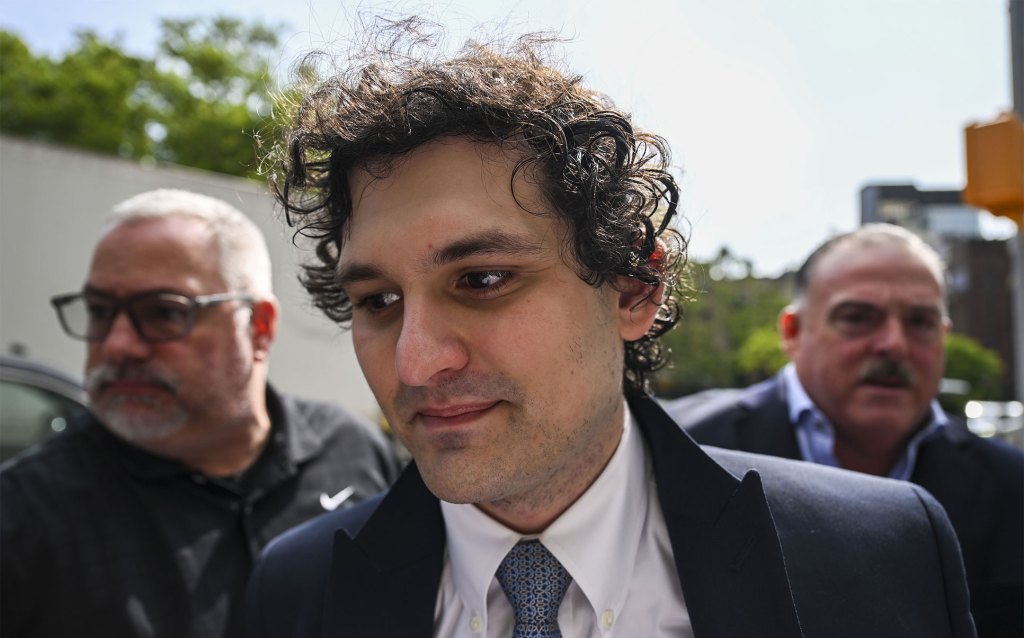 Image Credits: Fatih Aktas/Anadolu Agency / Getty Images
Image Credits: Fatih Aktas/Anadolu Agency / Getty Images
Sam Bankman-Fried, the co-founder and former CEO of crypto exchange FTX and trading firm Alameda Research, was sentenced to 25 years in prison by Southern District of New York (SDNY) Judge Lewis Kaplan, about five months after he was found guilty on all seven counts related to fraud and money laundering during his trial.
“When not lying, he was evasive, hair splitting, trying to get the prosecutors to rephrase questions for him,” Kaplan said on Thursday, according to Inner City Press. “I’ve been doing this job for close to 30 years. I’ve never seen a performance like that.”
Before sentencing, Bankman-Fried acknowledged in court that he made a “series of bad decisions,” but argued they were not “selfish” ones.
His possible total sentence for the seven counts — two fraud charges and five conspiracy charges — was a maximum of 110 years. Bankman-Fried was also ordered during the sentencing to pay forfeiture of $11 billion to the U.S. government. Kaplan said that the “punishment,” or sentencing, was to fit the seriousness of the crime.
Earlier this month, U.S. prosecutors from the Department of Justice called for a “necessary” 40- to 50-year sentence for him. “The sheer scale of Bankman-Fried’s fraud calls for severe punishment,” the notice stated. “The amount of loss—at least $10 billion—makes this one of the largest financial frauds of all time.” On Thursday, Kaplan said that range “would be more than necessary.” In late February, Bankman-Fried’s attorneys filed a notice suggesting their client gets 63 to 78 months, citing his “caring for individuals,” “remorse,” “low-level culpability” and more.
Regardless of what both parties wanted, this decades-long sentencing is a result of Bankman-Fried’s five-week trial, which dove deep into how one of the once-biggest crypto exchanges globally, and its sister trading company, collapsed in November 2022.
His sentence could also send a signal to the crypto industry at large. As Judge Kaplan is required to consider the “need for the sentence to afford adequate deterrence,” aka to discourage other white-collar defendants and for bad actors in the crypto space more generally, Josh Naftalis, a former federal prosecutor now with Pallas Partners in New York, told TechCrunch. “In other words, the court is permitted to consider how the sentence it imposes on SBF will send a message to the crypto asset industry.”
Mark Bini, who’s also a former federal and state prosecutor and now a partner at Reed Smith’s On Chain digital asset group, agrees. The sentence will be a “real marker in the crypto arena,” he said, adding that this outcome “may be a measuring stick for future sentencings involving crypto fraud.”
And in the federal system, there’s no parole. But, defendants like Bankman-Fried can earn “good time” credit, under the First Step Act, which could reduce their sentence for good behavior while incarcerated, both lawyers noted. There’s a number of opportunities for first-time non-violent offenders to earn reductions in their sentences, Bini said. This can result in a defendant’s sentence being reduced by up to 15% of the initial sentence imposed,” Naftalis added.
Bankman-Fried has been residing in the Metropolitan Detention Center in Brooklyn, New York, ever since he lost his bail prior to his trial. Other notorious past inmates of the correctional facility include Jeffery Epstein’s accomplice Ghislaine Maxwell and “pharma bro” Martin Shkreli.
Looking back on SBF and FTX
Before prison, Bankman-Fried was once on top of the crypto world, hanging with celebrities like Katy Perry and trophy-winning athletes like Tom Brady and putting his company name on Major League Baseball umpires’ shirts and the Miami Heat arena. Prior to its collapse, FTX was one of the top crypto exchanges by volume, behind Coinbase and Binance.
FTX grew its users into the “millions” before its collapse, and revenue expanded from $10 million to $20 million in 2019, to $80 million in 2020 and to $1 billion in 2021; and daily revenue in 2021 was $3 million, Bankman-Fried said during his testimony.
But Bankman-Fried quickly dwindled in popularity and trust across the crypto community after a faulty balance sheet from Alameda was unveiled by crypto media publication CoinDesk in November 2022, causing industry-wide ripple effects and concern around FTX and its liquidity. Within days, the exchange filed for bankruptcy and Bankman-Fried stepped down from his role as CEO.
His trial, and the months leading up to it, uncovered that the problem was much larger than originally thought as Bankman-Fried and other executives misused over $8 billion in customer funds. Bankman-Fried testified that he didn’t defraud FTX customers or use their funds, but that Alameda “borrowed” that capital from the exchange.
Mark Cohen, Bankman-Fried’s lead attorney, also said the government made a Hallmark movie–like case against Bankman-Fried and while he made “bad business judgments” the government has “tried to paint Sam into some sort of villain, some sort of monster.”
In the end, the jury didn’t buy that narrative. Prosecutors strongly argued Bankman-Fried made a number of false promises internally and externally and was responsible for the loss of billions of dollars for thousands of FTX investors. They emphasized how it was wrong to use FTX customers’ funds without their knowledge or approval.
And as a result, Bankman-Fried will be spending quite some time behind bars.
The article has been updated to include additional details in the third and forth paragraphs.




